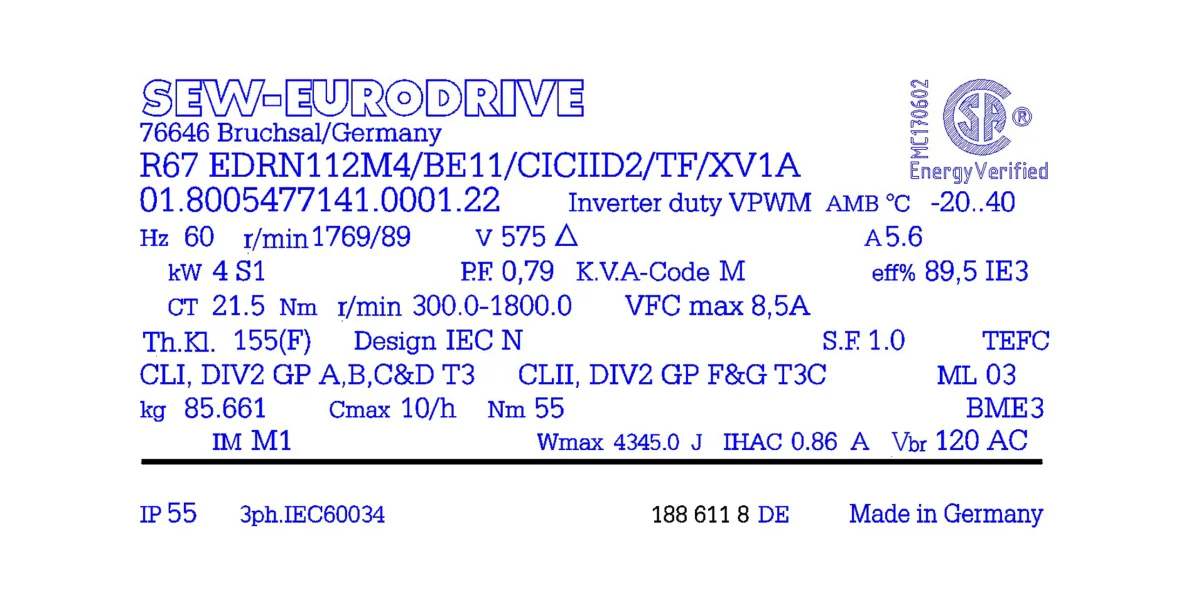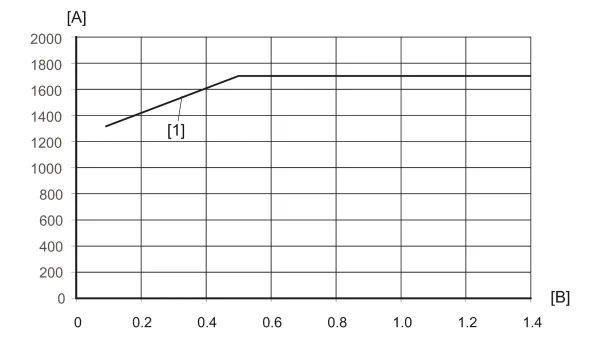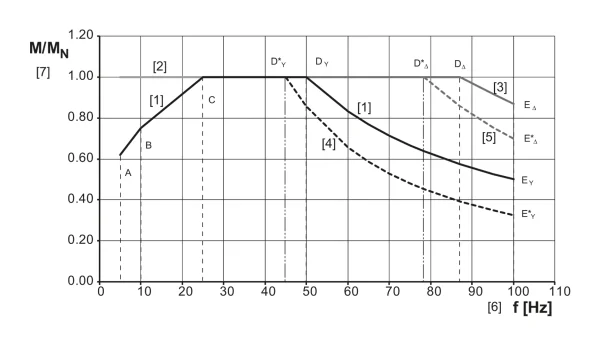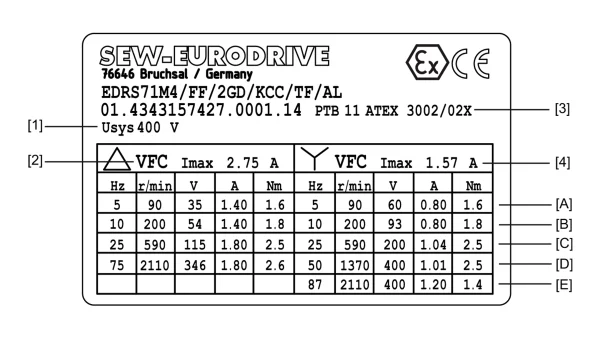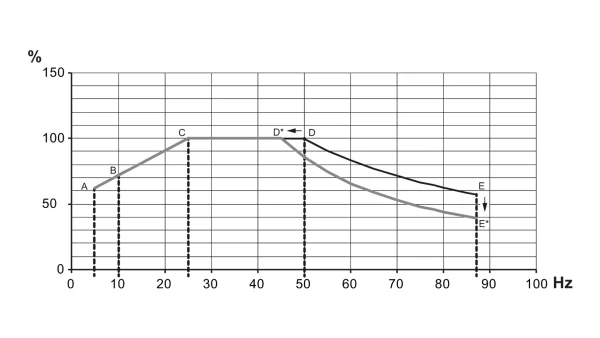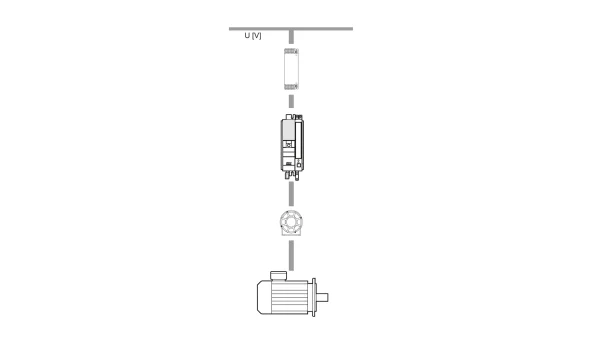Explosion protection: Directives and standards
Country regulations
This map gives you a quick overview of which directives and standards apply in the respective country.








-
 Europe (ATEX and others)
Europe (ATEX and others)
-
 The IECEx certification agreement
The IECEx certification agreement
-
 HazLoc-NA® certification
HazLoc-NA® certification
For designated use in potentially explosive atmospheres in the European Union, the equipment and protective systems are described in Directive 2014/34/EU for the harmonization of the legislation of member states. The directive, also known as the ATEX directive, is primarily geared towards manufacturers and/or distributors of products that will be used in potentially explosive atmospheres.
This directive applies to gearmotors and motors, and has been in full legal force since April 20, 2016. Other European countries, such as Switzerland and Turkey, have also adopted this regulation.
There are no fundamental changes or new requirements for design-based explosion protection. The terminology contains significant new features compared to Directive 94/9/EC. The EC type examination is now known as the EU type examination, and the EC declaration of conformity has become the EU declaration of conformity. Existing EC type examination certificates will remain valid.
Directive 1999/92/EC primarily targets employers and system operators. It stipulates minimum regulations for safety requirements intended to prevent explosion-related accidents. In Germany, for example, this directive has been incorporated into national law with the Ordinance on Industrial Safety and Health (BetrSichV).
-
Product marking
-
Eurasian Customs Union - Russia, Belarus, Kazakhstan, Armenia
-
Ukraine
-
United Kingdom
- Manufacturer's name and address
- CE marking
- Designation of the series and type
- The serial number, if applicable
- The year of manufacture
- The special "Ex" marking for explosion prevention combined with an indication of the category
- For equipment group II, the letter "G" (for areas with potentially explosive gas, vapor, or mist/air mixtures)
- and/or the letter "D" (for areas in which dust could produce potentially explosive atmospheres)
The Eurasian Customs Union has adopted a number of European directives, with some modifications.
In the field of explosion protection, TR CU 012/2011, which is based on EU Directive 94/9/EC, has replaced the GOST regulations.
For products in potentially explosive atmospheres, the EAC marking (Eurasian conformity) alone, as found on standard motors for example, is not sufficient. The products must be certified according to the technical regulation "ТR СU 012/2011: Safety of equipment for work in explosive environments" and also receive an EX marking in addition to the EAC label.
The EACEx certification was created on the basis of the ATEX certification.
SEW-EURODRIVE asynchronous motors and asynchronous gearmotors are to be shipped with both labels.
The ATEX markings remain unchanged and the motor or gearmotor receives a second nameplate with the EACEx specifications. The second nameplate is always attached to the motor.
Stand-alone gear units are not to be shipped with both labels. The main nameplate is to be modified to fulfill all requirements of technical regulation ТR СU 012/2011.
Additional marking:
- EAC mark
- Ex marking
- Certification authority
- Certificate number
- EACEx marking for gas
- EACEx marking for dust
- Warning
Specifications are written in Cyrillic.
The Ukraine has also adopted some of the European directives, with modifications.
In the field of explosion protection, Regulation no. 1055 from December 2016 laid down technical standards for equipment and protective systems to be used in potentially explosive atmospheres.
Product marking
Motors for the Ukrainian market are certified according to the "Ukrainian Technical Regulations" (UA.TR) and are marked accordingly.
Motors for United Kingdom are designed according to the "Equipment and Protective Systems Intended for Use in Potentially Explosive Atmospheres Regulations 2016".
Product marking
For motors, there is the UK declaration of conformity and for category 2 motors, there is the "UK Type Examination Certification".
They are marked analogously to the European rules but with the UKCA marking.
When it comes to product labeling, the countries of England, Scotland and Wales are classed as the UK. Due to the Northern Ireland Protocol, the CE marking will continue to be used for Northern Ireland.
Worldwide platform for mutual recognition of certifications
The IECEx certification agreement serves as a worldwide platform for the mutual recognition of test results for obtaining certification or approval for explosion-protected electrical equipment. The basis is formed by the
- "IECEx 01 IEC Scheme for the Certification to Standards for Electrical Equipment for Explosive Atmospheres (IECEx Scheme) – Basic Rules" and
- "IECEx 02 IEC Scheme for the Certification to Standards for Electrical Equipment for Explosive Atmospheres (IECEx Scheme) – Rules of Procedure".
These two documents and other IECEx work documents are available free of charge in the IEC online shop at www.iecex.com.
Objectives of the IECEx agreement
The agreement serves to promote international trade with explosion-protected electrical equipment by eliminating double tests and certifications, which were required so far. The fundamental purpose of the agreement is to verify compliance with the IEC standards for electrical equipment in potentially explosive atmospheres in an internationally recognized form. It must be ensured that these standards are applied by test laboratories (ExTL, Ex-Testing Laboratories) and certification bodies (ExCB, Ex-Certification Bodies) so that assessment of a product's compliance with the standards provides the same results in every country.
Products from SEW-EURODRIVE are certified by the PTB as ExTL and ExCB according to IECEx and are available in the equipment protection levels (EPL) .b and c.
-
Product marking
-
Standards
-
Australia and New Zealand
-
South Korea
-
Brazil
-
India
-
People’s Republic of China
Basic marking according to IECEx
- IECEx mark of conformity for motors of the EDR.. series with IECEx marking license no. (PTB 001)
- Name and address of the manufacturer
- Manufacturer's type designation
- Serial number
- The name or ID of the authority that issues the certificate, and the certificate ID in the following form: the last two numbers of the year it was issued, followed by a period, followed by a unique four-digit series of characters for the certificate in that year (e.g. IECEx PTB 11.0041/01)
- The relevant Ex marking for potentially explosive gas atmospheres or for potentially explosive dust atmospheres
- All additional information for the relevant protection types
The most important standards for explosion protection are the standards of the IEC-60079 series:
- IEC 60079-0, Explosive atmospheres – Part 0: Equipment – General Requirements
- IEC 60079-1, Explosive atmospheres – Part 1: Equipment protection by flameproof enclosure "d”
- IEC 60079-7, Explosive atmospheres – Part 7: Equipment protection by increased safety "e"
- IEC 60079-10, Explosive atmospheres – Part 10-1: Classification of areas – Explosive gas atmospheres
- IEC 60079-10-2, Explosive atmospheres – Part 10-2: Classification of areas – Explosive dust atmospheres
- IEC 60079-11, Explosive atmospheres – Part 11: Equipment protection by intrinsic safety "i"
- IEC 60079-14, Explosive atmospheres – Part 14: Project planning, selection and setup of electrical machinery
- IEC 60079-15, Explosive atmospheres – Part 15: Equipment protection by protection type "n”
- IEC 60079-17, Explosive atmospheres – Part 17: Testing and maintenance of electrical machinery
- IEC 60079-19, Explosive atmospheres – Part 19: Equipment repair, overhaul and reclamation
- IEC 60079-31, Explosive atmospheres – Part 31: Equipment dust ignition protection by enclosure "t"
along with
- IEC 60079-2 Explosive atmospheres – Part 2: Equipment protection by pressurized enclosure "p"
- IEC 60079-5 Explosive atmospheres – Part 5: Equipment protection by sand filling "q"
- IEC 60079-6: Explosive atmospheres – Part 6: Equipment protection by oil immersion "o"
- IEC 60079-13 Explosive atmospheres – Part 13: Equipment protection by pressurized rooms
- IEC 60079-18 Explosive atmospheres – Part 18: Equipment protection by encapsulation "m"
Product marking
Australia and New Zealand recognize the IECEx certification directly. Furthermore, the motors must meet the efficiency requirements according to GEMS (Greenhouse and Energy Minimum Standard) Act 2012 and GEMS Determination 2019. The motors of the EDR.. series meet all these requirements and are registered according to GEMS.
No additional country-specific markings are required in either country.
As of October 01, 2018, explosion-protected motors with 0.75 kW and more must also correspond to the minimum efficiency level IE3. The EDRN.. motors meet these requirements and are equipped with the KEL (Korean Energy Label) according to the Korean efficiency levels.
In South Korea, products in potentially explosive atmospheres must be certified according to articles 34 and 35 of the Occupational Safety & Health Act from the KOSHA (Korea occupational Safety and Health Agency).
The Republic of Korea has joined the IECEx agreement. Test reports required for the IECEx certification of the EDR.. motors are approved by KOSHA. However, individual certificates for the respective motors are issued. South Korean regulations are guided by the series of standards IEC 60079 for gas and IEC 61241-1 for dust. Potentially explosive atmospheres are classified according to KS C IEC 60079-10. Equipment is selected according to KS C IEC 60079-14.
Certified motors are marked with the KCs logo and the certification number. In addition, the marking according to the Korean standards is specified. The texts with the certification number and the marking have Korean characters. The data is supplemented with KOSHA as approval authority.
The standards currently valid in South Korea do not match the current editions of the IEC standards. For this reason, certifications from KOSHA include the explosion protection markings valid for Korea. EDRN.. motors have been developed and manufactured according to the latest IEC standards. Therefore, the motors are marked with the IEC identification. South Korean authorities recognize these identifications. In addition, the identifications according to the Korean standard are marked on the nameplate.
The table shows a comparison of the marking of explosion protection
Close table
| EDRN.. | Identification according to Korean standards | Identification according to IEC |
|---|---|---|
| 2G-b | Ex e IIC T3 | Ex eb IIC T3 Gb |
| 3G-c | Ex nA IIC T3 | Ex ec IIC T3 Gc |
| 2D-b | Ex tD A21 IP65 T120 °C | Ex tb IIIC T120 °C Db |
| 3D-c | Ex tD A22 IP54 T120 °C | Ex tc IIIB T120 °C Dc |
| Ex tD A22 IP65 T120 °C | Ex tc IIIC T120 °C Dc |
We have stored a table for you here.
The motors have been certified by the Korean KOSHA according to the following standards.
Close table
| Medium | Explosion protection | General standards | Specific standards |
|---|---|---|---|
| Gas | Increased safety "e" | KS C IEC 60079-0 | KS C IEC 60079-7 |
| Degree of protection "n" | KS C IEC 60079-15 | ||
| Dust | Protection by enclosure "tD" | KS C IEC 61241-0 | KS C IEC 61241-1 |
We have stored a table for you here.
Product marking
Additional marking:
- KCs - marking
- Certification authority
- Certificate number
- Korean explosion protection marking
Additional marking:
- KCs - marking
- Certification authority
- Certificate number
- Korean explosion protection marking
Brazilian regulations require certificates of conformity (CoCs) issued by the National Institute of Metrology, Quality and Technology (INMETRO). The IECEx CoC is not valid in Brazil, even though ExTRs are recognized and form part of the INMETRO CoC.
Areas exposed to explosion hazards are defined for the Brazilian market in the regulations Nº 179, from May 2010, and Nº 89, from February 2012.
EDR.. motors are certified by the DNV certification authority based on the IECEx certification according to the requirements of the Brazilian authority INMETRO. This also includes certification of the production sites.
Additional marking:
- Specification of the Brazilian motor standard
- Type of starting behavior
- Relation between starting current and rated current
- Motor type: Induction motor with squirrel-cage rotor
- INMETRO logo, ExCB logo (DNV) and number
- Explosion certificate numbers
- Energy efficiency class
- Wiring diagrams
In India, there are two important standards for determining and selecting electrical equipment:
- IS 5571: Guide for Selection and Installation of Electrical Equipment for Hazardous Areas (other than mines). This standard is based on IEC 60079‑14.
- IS 5572-2009: Classification of hazardous areas (other than mines) having flammable gases and vapors for electrical installation. This standard quotes IEC 60079‑10.
Operating resources in protection type n (non-sparking) and e (increased safety) are permitted in zone 2 only. Motors in flameproof enclosure protection type "d" must be used for zone 1.
For operating resources in potentially explosive areas with gas atmosphere, the approval by the Chief Controller of Explosives (CCE or CCoE) is often prescribed.
Approval from the Chief Controller of Explosives (CCoE) is obligatory for all electrical equipment installed in potentially explosive atmospheres. Rule 106 of the Petroleum Rules 2002 specifies that all electrical equipment used in potentially explosive atmospheres require CCoE approval. Approval for such equipment is therefore only limited to areas covered by the "Petroleum and Explosives Safety Organization" (PESO).
As of January 1, 2018, motors must meet the requirements of Indian standard IS12615 "Line Operated Three Phase a.c. Motors (IE CODE) – Efficiency Classes and Performance Specification". Therefore, motors must at least meet the requirements of energy efficiency class IE2.
However, motors designed for use in explosion-protected areas are not subject to the requirements of IS12615.
Additional marking:
Motors that are certified by CCoE are marked with:
- Manufacturer's name
- Manufacturer's type designation
- Number and date of the certificate according to approval
- Equipment reference number according to approval
- Ex degree of protection
In accordance with the Chinese energy efficiency regulation GB18613, explosion-protected motors must also meet the requirements of at least Chinese Grade 3. The motors are marked with the CEL (Chinese Energy Label).
Starting on June 1, 2021, the new GB 18613-2020 prescribes Grade 3, equivalent to energy efficiency class IE3 for 0.12 kW and higher. According to the CEL007/2021 implementation ordinance, only motors from 0.75 kW to 375 kW require marking.
As of October 1, 2020, products that are intended for use in potentially explosive atmospheres must be certified and meet the requirements of the "China Compulsory Product Certification CCC for Explosion-proof Electrical Products". Without this certification, they may not be delivered, sold, imported, or used in other business activities.
The CCC Certification is based on the CNCA-C23-01:2019 implementation rules and the Chinese standards. The term typically used is CCCEx.
EDRN.. motors from SEW-EURODRIVE have been developed and manufactured according to the latest IEC standards. Therefore, they bear the identifications according to IEC and IECEx.
The standards currently valid in the PR China currently do not match the editions of the international IEC standards. For this reason, certifications according to CCC include the explosion protection identifications valid for China.
In order to meet the requirements of Chinese standards and authorities, the motors will receive a new nameplate. In this case, this is the primary nameplate. In addition, the motor receives the associated IECEx plate.
This indicates that the motors are approved under both CCCEx and IECEx.
The table shows a comparison of the marking of explosion protection
Close table
| EDRN.. | Identification according to Chinese standards | Identification according to IEC |
|---|---|---|
| 2G-b | Ex e IIC T3 Gb | Ex eb IIC T3 Gb |
| 3G-c | Ex nA IIC T3 Gc | Ex ec IIC T3 Gc |
| 2D-b | Ex tD A21 IP65 T120 °C | Ex tb IIIC T120 °C Db |
| 3D-c | Ex tD A22 IP54 T120 °C | Ex tc IIIB T120 °C Dc |
| Ex tD A22 IP65 T120 °C | Ex tc IIIC T120 °C Dc |
We have stored a table for you here.
The motors were certified by the Chinese NEPSI (National Supervision and Inspection Center for Explosion Protection and Safety of Instrumentation) according to the following standards.
Close table
| Medium | Explosion protection | General standards | Specific standards |
|---|---|---|---|
| Gas | Increased safety "e" | GB3836.1 – 2010 | GB3836.3 - 2010 |
| Degree of protection "n" | GB3836.8 - 2014 | ||
| Dust | Protection by enclosure "tD" | GB12476.1 – 2013 | GB12476.5 – 2013 |
We have stored a table for you here.
Additional marking:
- CCC marking
- Certification authority
- Certificate number
- Chinese explosion protection marking
- Production facilities
- Manufacturer
Certified by CSA for the North American market
HazLoc-NA® (Hazardous Location Northern America) is a synonym for explosion protection in North America, like ATEX for Europe or IECEx for many other countries.
Unlike ATEX and IECEx where the areas in which a potentially explosive atmosphere may be present are divided into zones (0, 1, 2, 20, 21, 22), NEC500 and C22.1 make a distinction between division 1 and division 2 as well as between class I for gas and class II for dust.
Our products for the North American market for use in potentially explosive atmospheres in division 2 are certified by the CSA and bear the CSA logo.
This certification confirms that the motors and options were tested and that they met the applicable standards for safety and/or performance, including the relevant standards defined or managed by:
- The Canadian Standards Association (CSA),
- The American National Standards Institute (ANSI)
- Underwriters Laboratories (UL) and
- NFPA70 (the National Fire Protection Association)
.
-
Product marking
CSA marks are accepted by many manufacturers, retailers, regulators and inspectors in the electrical, gas, building and plumbing sectors throughout the USA and Canada.
Motors for explosive atmospheres must also meet efficiency requirements in the USA and Canada. This is indicated by the corresponding CSA logo for Canada and the marking according to CFR 431 for the USA.
Additional product marking
- CSA label
- Master Contract No. 170602
- Type designation
- Electrical rated values in volts, horsepower or kW, ampere, and rpm
- Serial number
- Hazardous Location Designation
- CLASS I, DIVISION 2, GROUPS A, B, C & D; Temperature Code T3C or T3
- CLASS II, DIVISION 2, GROUPS F & G; Temperature Code T4A or T3C
- Insulation class
- Power factor
- Degree of protection (totally enclosed, fan-cooled)
- Ambient temperature range
- Manufacturing location
- Electrical data of the brake (voltage, current)




